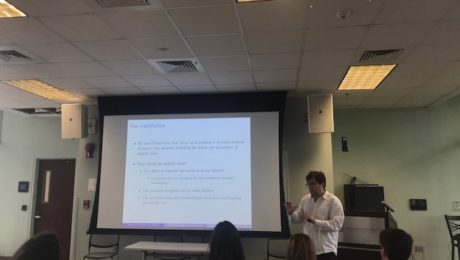The Provision of Elderly Care and the Macroeconomy
The dramatic increase in life expectancy in most developed and developing countries over the last few decades has led to renewed discussions around elderly care policy options, and the debates are expected to intensify as the ratio of elderly to working-age adults continues to rise. According to United Nations, the share of people aged 60 years or over is growing faster than all younger age groups. Older segments of the world population are expected to double by 2050 and to more than triple by 2100. In addition to these demographic shift, contemporary societies are still characterized by prevalent gender inequality. One aspect of gender inequality is the unequal intra-household division of labor, which is particularly important for the analysis of care policies: women still do most of the unpaid care work.
Brun et al (2019) develops an overlapping-generation model to analyze the economic effects of increasing elderly care needs and evaluate different care arrangements, including the prevalence of unpaid care work. They model the demand of care as being complementary to elders’ consumption. This complementarity increases over time, as retired households become older, making the demand for care more inelastic. They analyze how increasing care needs affect key economic aggregates, such as savings, the gendered provision of paid and unpaid care, and the female labor market participation. Finally, they use the model to study the effects of the secular increase in women’s labor supply that took place between the 70s and the 90s on the provision of care, and evaluate alternative social arrangements, e.g. market-based vs publicly provided care, that so far have only partially replaced the unpaid care traditionally provided by women.
The paper will be available December 2019
- Published in Rethinking Macroeconomics, South Korea
Options for modeling the distributional impact of care policies using a computable general equilibrium (CGE) framework
The importance of public investment and adequate care policies for gender equality has come to the forefront of the policy agenda in recent years. The Sustainable Development Goals framework for the first time explicitly recognizes the unequal distribution of unpaid domestic work and care as main source of gender inequality. Target 5.4, in particular, draws attention to the role that public policies can play in providing infrastructure and social services to both reduce and redistribute domestic work and care., Gender-aware Computable General Equilibrium (CGE) models which account for different dimensions of gender inequality in the economy could be adopted to evaluate the gender distributional effects of these policies. Fontana et al. (2019) provide a review of this approach, highlighting the challenges therein as well as the ways forward.
CGE models are representation of the functioning of an entire economy drawing on detailed empirical data, and can be fairly disaggregated in terms of sectors, factors of production and household categories. Existing Gender-Aware CGE (CGGE) have been mostly used to simulate trade related policy changes and fall into two broad categories: those that use a gender-disaggregated approach and those that use a ‘two-systems’ approach. The first set of models disaggregate standard economic variables and categories such as production activities and labour factors to highlight female-intensive sectors. However, unless these disaggregations are accompanied by behavioural rules that reflect the causes of unequal gender patterns, this approach does not generate plausible results
The second set of models are closer to a feminist economics approach as they include unpaid care work and its interaction with the market economy. However existing applications tend to model unpaid care work simply as a constraint to women’s participation in the paid market economy and are limited to comparative statics as opposed to dynamic analysis. There is therefore the need to develop a more nuanced approach that incorporates a range of labour market imperfections as well as dynamic dimensions to better capture the gendered nature of both the market and the non-market economy. Such approach would enable CGE modelers to better explore the distributional implications of alternative care related fiscal policy simulations. Fontana et al. (2019) also review CGE papers that are not gender-aware but incorporate labour market imperfections and dynamic processes that are relevant for gender analysis.
Using insights from these different bodies of CGE literature, they suggest several ways forward for modelling the gender distributional effects of public policies. First, modelers need to disaggregate their data sets not only by gender but also by other socio-economic characteristics to highlight how gender intersects with other sources of disadvantage and to reflect the specific gendered structure of a particular economy. For example, mothers of infants and elderly women face different challenges related to both work and care provision. Second, modelers should consider different wage setting mechanisms and rules of operation of the labour market to better represent the causes of gender discrimination. For example, women in many countries tend to be crowded in a fewer sectors and occupations than men, including into care sectors that offer poor working conditions and pay. Third, modelers need to move beyond modelling unpaid work as simply a constraint to labour market participation and emphasize its role in human capacity development in the long term. To this end, a dynamic approach would be especially useful.
The paper will be available December 2019
- Published in Gender-Aware Macromodels, Rethinking Macroeconomics


